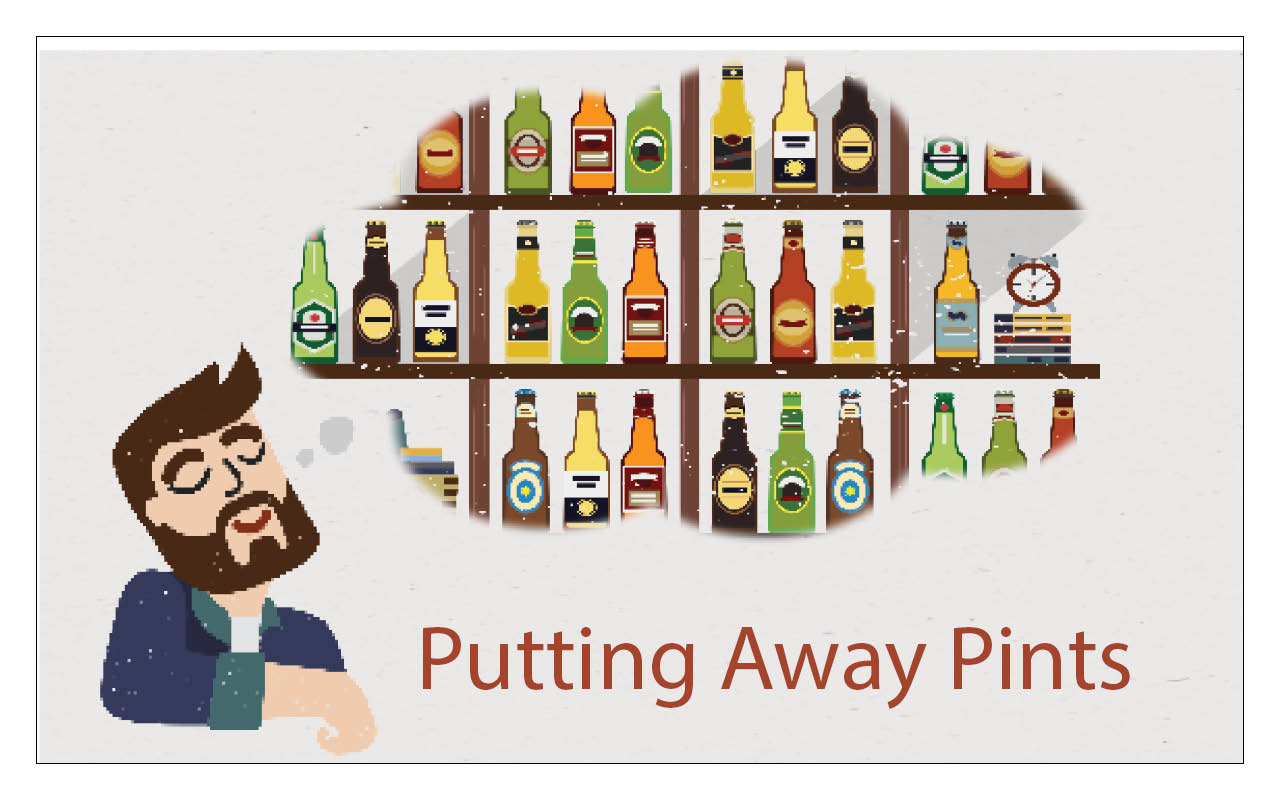 When I mention my beer cellar, my wife usually rolls her eyes.
When I mention my beer cellar, my wife usually rolls her eyes.
Mainly she does this because she knows when I say something like, “I’ve got some really good stuff in the cellar right now,” I’m actually referring to rows of dusty bottles on the metal shelving that I bought at Home Depot and put in our basement.
And while, of course, it is a tad pretentious to refer to these shelves next to the laundry tub as a “cellar,” it doesn’t take much more to have a functioning beer storage space. Indeed, the ideal conditions for storing beer are essentially just a cool, dark place where you can fit a bunch of big bottles.
Tomas Morana is the co-owner of Birreria Volo, arguably one of Canada’s best beer bars. He’s also a co-founder of Keep6Imports, a company that works to bring rare and funky imports to Ontario. At Birreria Volo in Toronto’s Little Italy, the cellaring program is very much part of the venue’s draw and he takes it seriously.
“Temperature control and no exposure to light are the most important factors to consider when building a cellar,” he says. “Keeping your beers at a consistent cellar temperature of 10-13C is key. Humidity is another important factor to avoid having corks dry out.”
And while my makeshift basement cellar roughly approximates Morana’s specifications, his cellar is a little more aesthetically pleasing. Like the rest of the bar that Morana designed with his brother, Julian, and father, Ralph, the cellar was built to exacting specifications, and it’s clear that thought was put into the wooden-shelved, closet-sized space at the centre of their small venue.
“The cantina,” Morana prefers the Italian for cellar, “is the heart of the bar and is the focal point of our customer experience. The cellar was built with a custom warehouse-style window frame so you can see bottles inside the cellar from the outside. The floor is concrete and built with a drain in case any bottles break on the floor and each beer has a designated spot and is organized in the cellar with a code, so it’s easy to find during service.”
Once you’ve got your own Home Depot shelving or cedar-lined, vintage-factory-windowed cellar constructed, the question becomes which beers will you keep there.
Typical candidates for cellaring include big, barrel-aged offerings with bold flavours or boozy heat. These can potentially round out or mellow over time as part of the various processes connected to yeast maturity and controlled oxidation. For this reason, my cellar is mostly filled with Belgian strong ales, barley wines, and imperial stouts. Morana, however, tends to stick to wild ales when it comes to his aging program.
“The only beers I tend to age or cellar intentionally are lambic,” he says. “At the bar, we have 32 beer options on tap so anything meant to be consumed fresh should always be a draught option. My rules for cellaring are: Do not age fresh beers. I recommend the only types of beers to cellar are lambics, sours, or brett beers, or, if you want to, strong styles above eight per cent like imperial stouts, porters and barley wines.”
Of course, the real question about cellaring beer is whether or not it makes much of a difference to a particular beer, or if it’s even actually worth the effort. In my own basement-aging experience, it isn’t really. The inherent difficulty of actually storing beer to save for later is that you never actually know when the right time will come to open them. Indeed, the only way to tell if your beer is ready to drink is to drink it.
Iain McOustra is the head of brewing at Toronto’s Amsterdam Brewery, and he has, over his tenure, produced many an excellent wild ale and a plethora of big, boozy stouts. Even he admits that cellaring beer is something of a crapshoot.
“How do you know when a beer is ready to drink?” he asks. “You don’t. Temperature swings, the packaging process, and batch differences mean you never really know how a bottle that’s been aging will taste. Big imperial stouts and barley wines are a safer bet, but you still never know.”
I didn’t have the foresight to put a drain near my beer shelves like Morana did. I’m reminded of my lack of foresight when I open a wild or bottle-conditioned ale and am met with the familiar and disappointing “gusher,” a beer that essentially explodes when you open it because the live yeast has continued to consume sugar in the beer, resulting in excess carbonation and… kapow!
Memorably, this happened to me with a red-wine-barrel-aged stout I brought home from Italy, and I now have a couch that will never be the same.
The less furniture-destroying but equally disappointing alternative to a gusher is often that I’ve just let the oxidative process carry on for too long and am now left with a flat beer devoid of flavour, save for perhaps a soupcon of wet cardboard. McOustra admits to me he’s had similar results. “My wife and I have a beer cellar, and it’s a good place to see all the beers we’ve let sit too long,” he says. “We have maybe a 50 per cent success rate with anything over a year. It’s easier once you find a few classics that work but generally, beer is better fresh. Everyone has a great story of a decade old lambic or Thomas Hardy but for every one of those there are ten drain pours you don’t hear about.”
Ultimately, most beer cellars are akin to something like an expensive beer purgatory. You put what is surely a reasonably good beer on a shelf, hoping that you’ll remember to open it in time and praying that, when you do, the result is a marginally improved experience. I’ve got probably a few hundred dollars’ worth of excellent beer haphazardly tied up in an experimental process that one of Canada’s best publicans strictly monitors with a spreadsheet and that one of Canada’s best beer makers admits to having a 50 per cent success rate with. My wife is probably right to roll her eyes at my “cellar.”
If you have an urge to cellar a beer, your best bet is to ignore that urge. If you’re buying a beer from a brewery you know to make good beer, it’s probably a safe bet that, unless they say otherwise, that beer will taste pretty good if you crack it and drink it right away. But if you really feel the need to hoard beer in hopes that the yeast in it will continue to do interesting and not terrifying things or that age will mellow the alcohol heat rather than dull the flavour, at least buy two of the beers and drink one right away. And, when you eventually open the other one for comparison and end up drain-pouring it, make sure you have a six-pack of something fresh on hand in the basement to cleanse the disappointment from your palate.



